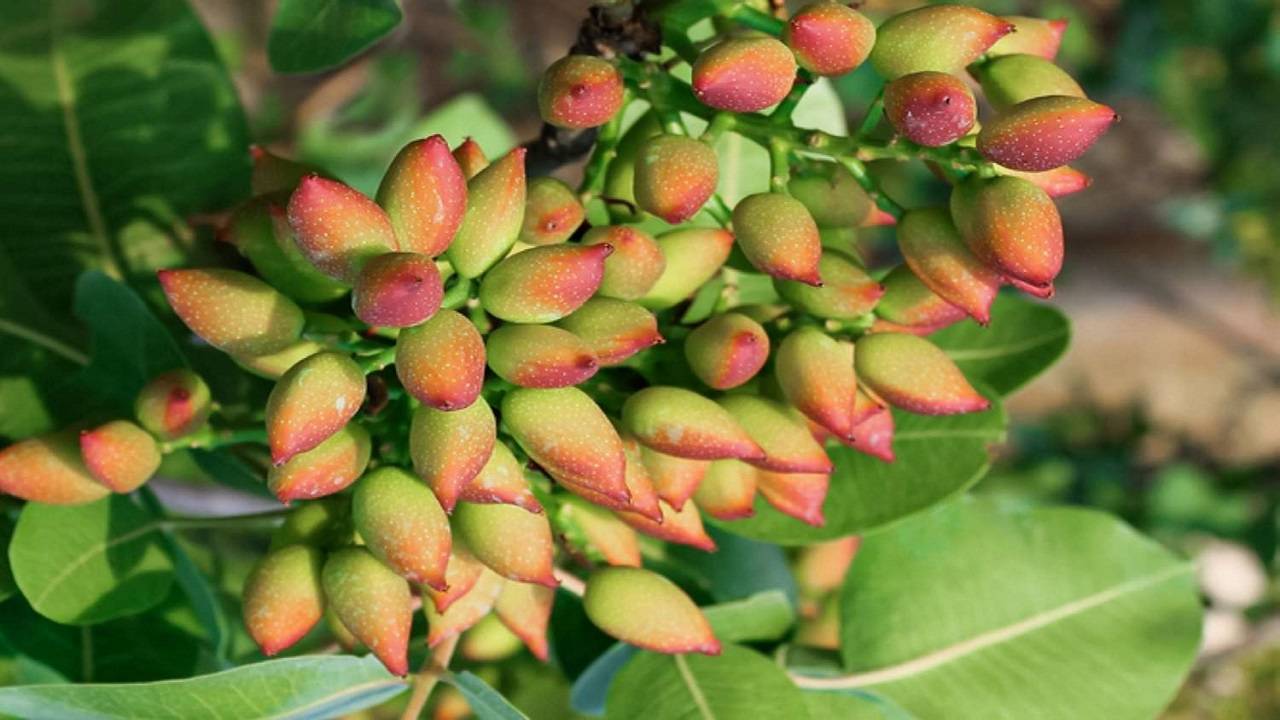
The pistachio tree produces pinnately compound leaves and large clusters of flowers and fruits with the seed encapsulated within a hard shell. This tree can live for hundreds of years and grow at least 20 to 30 feet in height. In India, Pistachios are grown in the high hills and valleys of the Chambal district of Himachal Pradesh, and in the dry temperate regions of Leh and Kargil in Jammu and Kashmir.
When to Plant Pistachios?
Pistachio trees grow in relatively mild climates; therefore, they can be planted throughout the year. However, experienced pistachio growers recommend planting pistachio trees when they are not actively growing. Generally, nurseries sell pistachio trees as bare roots or pre-potted in late winter, so that this tree can be planted in the ground before it starts to grow actively.
Soil
Pistachio trees can grow in a variety of soils but they particularly thrive in deep, sandy, loamy, and well-draining soils. This tree has taproots that like to grow in order to reach deep within the ground, therefore, heavy soil that retains a lot of water is not ideal for these plants.
Climate And Sunlight
Pistachios require a lot of sunlight during the day and are not a big fan of humidity. Therefore, it is perfect for regions that have long, hot, and dry summers and chilling winters. Optimal temperatures for the pistachio tree during summer are between 35 to 40 degrees Celsius and during winter between 0 to 10 degrees Celsius.
Pistachio trees do require exposure to chilly weather as it helps initiate new leaf and bud production. This tree also requires 8 plus hours of direct sunlight every day. Without exposure to proper direct sunlight, the pistachio tree can become leggy, more susceptible to disease, and unable to produce fruit.
Water and Humidity
Pistachios are native to Central Asia and the Middle East. Like many other plants grown in the region, Pistachio trees have long taproots that are capable of reaching water deep underground. This means that this plant is drought tolerant and is capable to thrive during a dry spell.
However, this does not mean that they do not require any water. Pistachio trees do require a fair amount of water to produce nuts. It prefers to be watered deeply but infrequently. Make sure that the tree doesn’t stand in water for too long as it can lead to root rot which increases the risk of fungal diseases. This plant does not appreciate humidity and moisture for a long time.
Fertilizer
Expert pistachio cultivators recommend conducting a soil test before adding any fertilizer to the soil. Use a fertilizer that fits the nutrient requirements of your tree. The best time to apply fertilizer is before the active growth period, in either late winter or early spring.
Pruning
It is imperative to prune the pistachio tree regularly in order to stimulate the growth of flowers and fruits and to also control growth. Pruning helps open up the centre of the pistachio tree and to avoid branches from overcrowding, crossing, and rubbing. It is advised to prune when the tree is dormant and to disinfect the pruning tools between trees to prevent the spread of disease.
Diseases and Pests
Pistachio tree tends to be susceptible to a variety of pests and diseases commonly caused by issues like droughts, floods, and poor soil conditions. The biggest enemy of pistachio trees is an overly moist environment as it can lead to a variety of fungal infections. This issue can be avoided by watering just the base of the tree, improving air circulation, and decreasing humidity by removing grass and nearby shrubs.
















